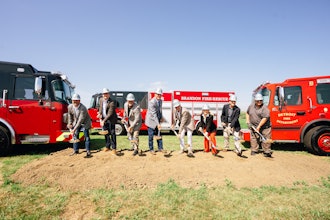For part I of this story, go here.
Strategies for collaborating with key stakeholders. Identifying the right stakeholders is invaluable for capturing critical information. To overcome production and personnel scheduling challenges, it often helps to conduct several visits to the plant. It is easier for managers and operators to schedule an hour or two on multiple occasions than to disrupt them from their daily tasks for an entire day. Multiple visits also offer the chance to pursue certain elements in more detail during a follow-up assessment. To optimize the time that is available, a precise and clear timeline is essential. Identify whom should be interviewed in advance, capture information about the facility and identify goals before starting the assessment. Once goals are established, the assessment can be broken into smaller, more manageable increments that can be tackled in shorter visits.
No one person knows everything about a plant, so it is vitally important to engage the right groups of people. With multiple sources, there can be conflicting data that must be reconciled and synthesized. The process of validating what is factual and what is anecdotal can be difficult. It takes experience to identify the most useful data for root cause analysis. Many leaders and operators frequently understand the symptoms but understandably have not always considered or fully researched their causes, so it is necessary to, respectfully, go into greater depth about what might be affecting the data operators are seeing. Things like atmospheric changes, contamination, or a particular mixture of products being run on a given day can all be revealing factors that may be understandably overlooked.
Surprising benefits of performing assessments. Beyond the goals they set out to achieve, assessments can uncover other weaknesses, and those can further benefit planning in the long run, by providing a fresh look at an old system. Other times, it can identify risks or points of failure that were not immediately visible in the past. It is not feasible to reassess every system often, but if future risks are identified during assessments, it is easier to mitigate them before they cause major issues and justify future assessments to address them proactively.
In one example, a senior project team engineer used heat exchange “pinch analysis” to identify some attractive improvements to a refrigeration system, but they were not feasible to complete in the brief timeframe of the initial project. The improvements were temporarily shelved because the team needed time to assess the risks of the proposed changes; however plant leaders were able to implement the improvements in a later project to capture that value. These changes resulted in higher system capacity, lower operating costs, and proved applicable to multiple installations. Change is not always easy, but the right changes can be profitable.
Older pieces of equipment can be supplanted by new technologies. Many times, modern control systems are capable of monitoring, sharing, and analyzing data in a way they could not when the equipment was initially designed. Without a specific fault that would drive an assessment on that piece of equipment, it may not be revealed that it is operating inefficiently. Often, it is only economically viable to revisit such questions simultaneously with other assessments.
Is that end-of-life coal powered boiler competitive with a newer natural gas boiler? Is the cooling water system pressure determined by a high elevation user that no longer exists? Is that fixed speed motor pump and pressure reducing valve better served by a VFD? Any number of larger users might have hidden potential for significant savings, but sometimes it takes a “fresh set of eyes” to see them.
Proactive effective energy assessments lead to solid solutions. Typically, plant leaders initiate an assessment because there is some need that is not being met. Start by identifying what those needs are. It is useful to have an outside perspective from someone who provides newfound objectivity and can align participants with the outcomes they are trying to achieve, rather than deferring to the way the system has historically operated. Find out why things have been done a certain way and ask whether that still applies, or whether it is worth changing. Is there a problem not related to changes over time that could be the cause of the inefficiency? Is the system run differently than was designed because the operations team never fully bought into or understood the design and found another way that made more sense to them? Is there a chance to simplify and make the controls more intuitive and more efficient at the same time?
Asking pointed questions can be the best way to get to the root cause of issues and fast track correcting them. In addition to defining the goals of the assessment, ask what resources are available (equipment, supporting systems, utilities) and the limits on those resources. Ask about other constraints that may reveal the goal to be unattainable or why the initial approach is impractical. It is good to know this as far in advance as possible and adjust as necessary. Constraints related to space, time, and budget can all complicate the effort. Based on the identified constraints, develop possible solutions and determine whether project stakeholders have the experience and time to implement them. If the resources aren't readily available, it may be necessary to adjust the focus of the solution. Through decisive planning and focused efforts, project stakeholders can continue to realize the global competitive benefits of energy assessments no matter what changes come their way.
Author Bio
Eric Hopkins, PE, is a Senior Chemical Process Engineer and Senior Associate at SSOE Group (www.ssoe.com), a global project delivery firm for architecture, engineering, and construction management. With 25 years of experience leading and executing industrial process projects around the world, his broad technical background allows him to lead chemical process engineers in addition to supporting projects in areas of energy, chemicals, refining, pharmaceuticals, consumer products, solar materials, semiconductor chemicals, and other manufacturing processes.























